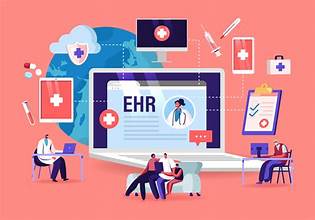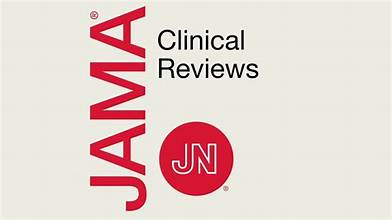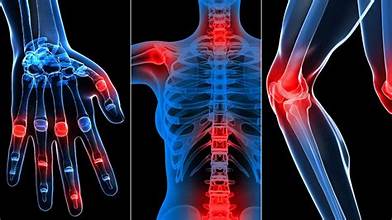An Electronic Health Record (EHR) is a digital version of a patient’s comprehensive medical history, maintained by healthcare providers over time. It includes essential clinical and administrative data such as demographics, medical conditions, medications, allergies, vital signs, immunization records, past medical history, laboratory results, and radiology reports.
EHR systems streamline access to patient information, enhancing workflow efficiency for healthcare professionals. They also support a range of care-related activities both directly and indirectly through integrated features like evidence-based decision support, quality management, and outcomes reporting.
EHRs represent an important advancement in modern healthcare, helping to strengthen the relationship between patients and providers. With real-time, accurate, and accessible data, clinicians can make more informed decisions and deliver higher-quality care.
Benefits of Using Electronic Health Records (EHRs):
In today’s digital healthcare environment, adopting Electronic Health Records (EHRs) is no longer optional it’s essential. Beyond simple record-keeping, EHR systems offer a wide range of advantages that improve patient outcomes, enhance operational efficiency, and support better decision-making across healthcare settings. Below are some of the key benefits, along with additional advantages of implementing EHR systems.
1. Enhanced Patient Care:
EHRs give healthcare providers instant access to a patient’s complete medical history, including past diagnoses, allergies, test results, and medications. This allows for faster, safer, and more personalized treatment decisions, minimizing the risk of adverse drug interactions and missed diagnoses.
2. Reduced Errors and Improved Compliance:
EHR systems feature built-in alerts, templates, and standardized documentation tools that help reduce human error and maintain consistency. They also ensure compliance with healthcare regulations, audits, and quality programs such as MIPS (Merit-Based Incentive Payment System) and HIPAA.
3. Greater Efficiency and Productivity:
By eliminating the need to handle paper files and repetitive data entry, EHRs streamline administrative tasks. This saves valuable time for both staff and clinicians, reduces patient wait times, and allows healthcare providers to see more patients each day without sacrificing care quality.
4. Improved Communication and Coordination:
EHR systems enable secure, real-time communication between healthcare professionals and patients. Providers can share lab results, prescriptions, referrals, and care plans electronically, improving coordination among specialists and ensuring that patients receive continuous, well-managed care.
5. Data-Driven Insights for Quality and Revenue:
With advanced analytics and reporting tools, EHRs allow healthcare organizations to monitor performance, identify care gaps, and track clinical outcomes. They also simplify data collection for value-based care programs, insurance claims, and incentive payments, leading to improved revenue management.
6. Enhanced Patient Engagement and Accessibility:
Most EHRs include patient portals, enabling individuals to view their records, schedule appointments, request medication refills, and communicate directly with providers. This empowers patients to take an active role in managing their health.
7. Better Public Health Management:
EHRs facilitate the secure sharing of de-identified data with public health authorities, helping detect disease trends, manage outbreaks, and support large-scale health research.
8. Environmental and Cost Benefits:
Transitioning to digital records reduces paper use and storage costs, promoting a more sustainable and cost-effective healthcare environment.
Overall, the use of Electronic Health Records creates a more connected, efficient, and patient-centered healthcare system, paving the way for smarter care delivery and improved health outcomes.
Key Components of an Electronic Health Record (EHR) System:
Electronic Health Record (EHR) systems are designed to digitally manage patient information and streamline healthcare operations. There are two main types of EHR systems:
- Inpatient EHR Systems: Used in hospitals and larger healthcare facilities, these systems are designed for interoperability, allowing seamless data exchange between departments such as radiology, pharmacy, and laboratories.
- Outpatient EHR Systems: Also known as ambulatory EHRs, these are built for smaller clinics or private practices. They focus on improving appointment scheduling, prescription management, billing, and day-to-day clinical workflows.
Each EHR system is composed of several essential components that work together to ensure accuracy, efficiency, and secure data handling in patient care.
1. Patient Health Information:
At the core of every EHR system is a comprehensive digital record that includes patient demographics, medical history, diagnoses, allergies, medications, test results, and treatment plans. This central database ensures that healthcare providers have accurate, real-time access to all relevant patient details.
2. Computerized Order Entry Systems:
These tools enable providers to electronically order tests, medications, and procedures, eliminating handwritten paperwork and minimizing the chances of duplication or transcription errors. This not only saves time but also enhances patient safety and workflow efficiency.
3. Clinical Decision Support Systems (CDSS):
EHRs often integrate decision support features that provide evidence-based alerts and recommendations. These tools help clinicians make informed decisions by highlighting potential drug interactions, suggesting best-practice treatments, and reminding them of preventive care measures.
4. Security and Privacy Controls:
Robust security measures such as data encryption, user authentication, and access control protect sensitive patient information. Only authorized personnel can access or modify records, ensuring compliance with privacy regulations like HIPAA.
5. Communication and Collaboration Tools:
Integrated messaging and coordination features allow smooth communication among doctors, nurses, laboratories, and pharmacies. This enhances collaboration, reduces delays in treatment, and ensures a more connected approach to patient care.
In summary, a well-designed EHR system combines data management, security, communication, and clinical intelligence to create a unified platform that supports accurate diagnoses, efficient operations, and improved patient outcomes.
Conclusion
Electronic Health Records (EHRs) have become the backbone of modern healthcare, transforming how medical data is collected, stored, and shared. By replacing traditional paper-based systems with secure, digital platforms, EHRs ensure that vital patient information is accurate, accessible, and up to date. This advancement not only enhances the quality and safety of patient care but also empowers healthcare professionals to make faster, data-driven decisions.
From improving communication and coordination among providers to increasing patient engagement and supporting public health initiatives, EHRs play a vital role in creating a more efficient and connected healthcare ecosystem. Their built-in tools for decision support, data analysis, and security compliance help maintain clinical accuracy while optimizing operational performance.
As technology continues to evolve, the integration of artificial intelligence, telemedicine, and predictive analytics into EHR systems will further revolutionize the healthcare landscape. In essence, Electronic Health Records are not just a digital alternative to paper charts they are a foundation for smarter, safer, and more personalized healthcare delivery in 2025 and beyond.








